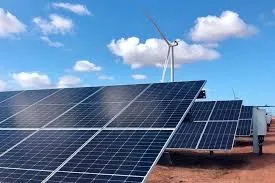Comparing Costs of Bifacial and Monofacial Solar Panels for Optimal Energy Production
Bifacial vs. Monofacial Solar Panels A Cost Comparison
The solar energy market has witnessed a remarkable evolution in recent years, with technological advancements leading to the development of various types of solar panels. Among them, bifacial and monofacial solar panels have gained significant attention. Understanding the cost implications of each type is essential for consumers, businesses, and investors looking to harness solar energy efficiently. In this article, we will delve into the differences in cost between bifacial and monofacial solar panels, taking into consideration factors such as installation, efficiency, maintenance, and overall value.
Monofacial Solar Panels A Traditional Choice
Monofacial solar panels are the most common type on the market. They consist of a single layer of solar cells that convert sunlight into electricity, utilizing a glass cover on the front side. These panels typically have a lower initial purchase cost compared to bifacial panels. On average, the cost of monofacial solar panels ranges from $0.50 to $0.90 per watt, depending on the brand, model, and technology.
However, while the upfront cost is lower, monofacial panels have certain limitations. Their energy production is primarily reliant on the sunlight that directly reaches the front side, which can lead to decreased overall efficiency, especially in locations with limited sunlight exposure or shading. As a result, consumers may need to install more panels to achieve the same energy output as a bifacial system, potentially increasing total installation costs.
Bifacial Solar Panels An Emerging Contender
Bifacial solar panels represent a newer technology that extracts energy from both the front and the rear sides. This design allows these panels to harness reflected sunlight and ambient light, which can significantly enhance their energy production. The average cost of bifacial panels typically ranges from $0.80 to $1.20 per watt, making them more expensive than their monofacial counterparts in terms of initial investment.
Despite their higher cost, bifacial panels can yield a competitive return on investment. The increased energy generation—often 10% to 30% higher than monofacial panels—can offset the additional initial purchase price over time. As a result, the overall levelized cost of electricity (LCOE) for bifacial systems can be more advantageous in the long run, particularly in areas with high albedo surfaces (like white roofs or reflective ground surfaces) that can enhance rear-side energy collection.
bifacial vs monofacial solar panel cost

Installation Costs and Considerations
When evaluating the cost of bifacial versus monofacial solar panels, installation is a critical factor. Bifacial panels generally require more careful installation, as they need to be positioned to maximize rear-side exposure. This often entails using specialized racking systems and installation techniques. Consequently, installation costs for bifacial panels may be higher—potentially adding 10% to 20% to the overall project cost.
However, considering the potential for greater energy production, the higher installation costs can sometimes be justified. For commercial projects where space is at a premium, fewer total panels may be necessary, which can alleviate concerns about space and possibly reduce additional mounting and hardware costs.
Maintenance and Longevity
In terms of maintenance, both bifacial and monofacial panels have similar requirements. Regular cleaning and inspections are essential to ensure optimal performance. However, bifacial panels may be more durable since they are often constructed with robust materials designed to withstand various environmental conditions.
The longevity of both types of panels is comparable, typically lasting 25 years or more. However, the more efficient energy generation of bifacial panels could mean that over their lifespan, they might offer a better overall value compared to monofacial panels.
Conclusion
When it comes to choosing between bifacial and monofacial solar panels, cost is undoubtedly a key consideration. While monofacial panels may present a lower initial investment, the enhanced energy production capabilities of bifacial panels can lead to a more favorable long-term financial outlook. Prospective buyers should assess their specific needs, geographic location, and financial resources to determine which option will provide the best return on investment. Ultimately, as solar technology continues to advance, the costs and efficiencies of both bifacial and monofacial panels will likely fluctuate, making ongoing evaluation essential for informed decision-making in the solar energy market.
-
Navigating Off Grid Solar Inverter: From Use Cases to Trusted PartnersNewsAug.05,2025
-
Solar Edge String Inverter: A Wholesaler’s Guide to Inverter Technology SelectionNewsAug.05,2025
-
Microinverters: Revolutionizing Solar Energy UseNewsAug.05,2025
-
Future of Monocrystalline Solar Panel Efficiency: Latest Technological AdvancesNewsAug.05,2025
-
Solar Panels for House: A Complete Guide to Residential Solar EnergyNewsAug.05,2025
-
Panel Bifacial Performance in Snow and Low-Light ConditionsNewsAug.05,2025







